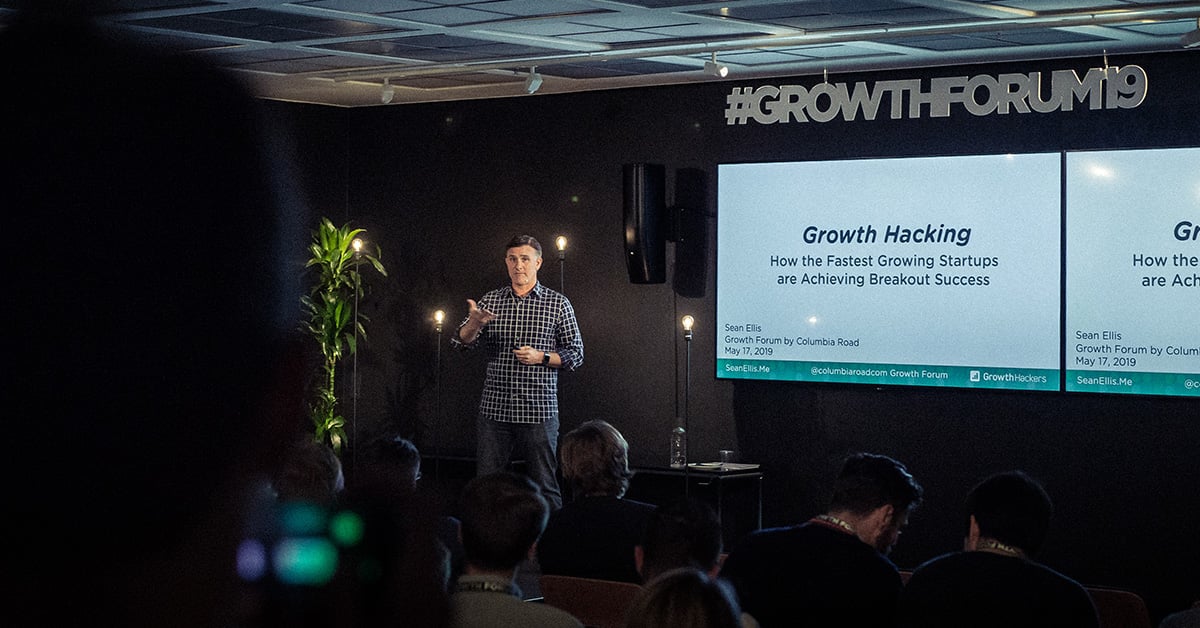The Data Handbook
How to use data to improve your customer journey and get better business outcomes in digital sales. Interviews, use cases, and deep-dives.
Get the book What really, is growth hacking? How has it evolved and what does Sean Ellis, the father of growth hacking, prophesy about its future?
What really, is growth hacking? How has it evolved and what does Sean Ellis, the father of growth hacking, prophesy about its future?
This interview digs deeper into the essence of growth hacking and its scientific process. Learn what differentiates a growth hacking business from more traditional businesses, the common pitfalls and how to get started.
In your own words, what is growth hacking?
It’s a scientific approach to rapid experimentation across the full customer journey to drive successful customer and revenue expansion.
Do you think growth hacking will exist in 10 years from today?
The name of it may change, but how companies grow hasn’t changed much in my career. Rapid expansion, using data, and understanding customers’ principles haven't changed and I don’t think that they will in the future. Google and Facebook may not be as important, but how you discover, optimise and maximise channels will probably be a similar process. The scientific process of hypothesising, analysing and testing has been around for thousands of years and I see no change there.
Do you feel that the type of company that is doing growth hacking has changed in the last 10 years?
Yes! The original pioneers of growth hacking were the companies that had to do it. LinkedIn, Twitter and Facebook are all social networks that have a network effect business and they didn’t become valuable or able to monetise until they had and lots of people on there. They had to think of creative ways to build audience on those products.
What you can see now is something that any business can benefit from: testing all of the potential areas of growth and not just advertisement. It’s not just social networks but every company should be thinking about what are the most cost-effective ways to acquire, convert and retain customers — and the only way to answer that question is through a lot of testing. This is what differentiates a growth hacking business from more traditional businesses where only the marketing team do most of the testing.
How can growth hacking change a large company?
Big companies may have behaviours where the marketing team doesn’t really communicate with the product team or the sales team. It’s a missed opportunity to think holistically about the customer experience. The most valuable thing you can do is establish a common metric and then measure progress against the mission and how the company is impacting its customers. If you can create a company-wide metric to grow the customer base, revenue will follow.
What are the most common pitfalls?
A lot of people confuse growth hacking with good marketing. The difference between growth hacking and good marketing is that growth hacking goes beyond the customer acquisition and looks at it holistically by thinking about the customer from consideration to a valuable retained customer.
The testing goes way beyond what a marketing team should be doing and involves the product team, engineering, design and testing all the way across to ensure customers have a good enough experience to stay with the service or product and integrate it into their daily life so you can get value over the long term.
Big companies might feel they have a lot to lose if growth hacking does not work, what’s your advice?
It’s about educating people who aren’t into testing that they are actually testing already, they have just tested one point at each stage of the customer’s journey. The chances that they came up with the best variation on their first attempt is almost impossible.
Essentially it is a mindset shift by saying that everything is a guess and the winners are the ones who run more experiments. If I test 10 things, 1 will be better than the other 9, likewise, if I test 100 things 1 will be better than the other 99. What you need to figure out is if 100 people go from a to b, but only 10 go from b to c, what happened to the other 90 people and can I do better than 10. You could ask the 90 people why they didn’t go from b to c and you’ll uncover some insights that will help you solve a problem and address a fear that may be holding the customer back.
If you use different methods to test the problem and the test is a solution to a known problem the chances of success are high. Sometimes people rush to do a lot of tests and they aren't so deliberate to run smart tests. If 10 tests fail it’ll be pretty hard to get your organisation to run another 10 tests. If you do your research and make sure your test addresses quantitatively measured problems it’s hard to not see improvement in your first 10 tests.
Bigger companies generally have an established brand, such as Walmart for example. How to align the brand with rapid, ever-changing growth hacking tactics?
The value of a brand isn’t what it used to be — an awesome customer experience is often as, or even more powerful, than just a trusted brand. It’s important to nurture a good brand but also adapt the growth mindset so that everything we are doing has a better way to do it and we need to prioritise our efforts around the areas that are least optimal.
The best brands are representing great customer experiences. You also strengthen a brand by improving customer experience. Find out what works well in tests for a limited amount of customers, and then work with the brand team to match up. To take the risk to move slower in order to protect the brand is not worth the risk.
How would you say a more traditional company should get started?
The first step they should take is to try to define what constitutes a great experience with their service or product. They should look at their most valuable customers and see what value those customers get from the product. Then the goal becomes: how do I get a lot more customers to have that experience — this is where the ‘North Star’ metric comes into play: build it around that experience.
When you focus on expanding the footprint of value that you are delivering, you gain engaged, retained and happy customers who easily become brand ambassadors. Growing that value curve in a consistent and stable way means that you can grow revenue in the same way.
If you grow revenue at a faster pace than you are adding value there is a good chance that the revenue will flatten out or even drop off. If you start with experimentation but you don’t have a common definition of what success looks like, then there will be disagreement about the direction to head in.
What are the secrets to building a successful growth culture and team?
When I started at Dropbox, we were only 10 people there, and a growth culture is what we set out to do. It’s about having the tools for tracking data, and the process to analyse it every day to workout where and why you are losing customers and who the most valuable customers are, and then designing 10 experiments to run.
It’s also about sharing the results and getting people excited about growth. It’s important to take a growth team and share transparently what is and isn’t working throughout the organisation, alongside sharing with everybody about how growth works. At Dropbox everyone takes ownership of growth. There are thousands of people who work for Dropbox who embody the growth culture — and that’s because we were super deliberative in building one.
Not every company is doing growth hacking so I think there is an advantage to start looking into growth hacking now rather than in the future.
Listen to the full interview, also featuring Columbia Road co-founder Sampo Hämäläinen, below.
For a more mobile-friendly experience (part 2 on Safari from -30:22)
_________
Keen on learning more on growth hacking? Learn how growth hacking can benefit your organisation and how you can incorporate it into your work and processes – Get your own copy of our popular Growth Hacker's Handbook below!
The Data Handbook
How to use data to improve your customer journey and get better business outcomes in digital sales. Interviews, use cases, and deep-dives.
Get the book





